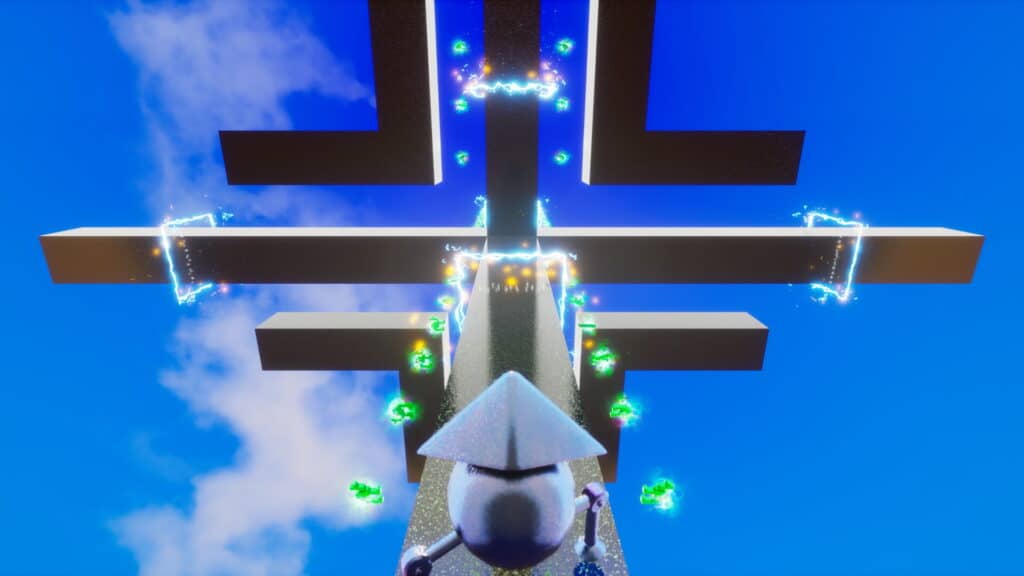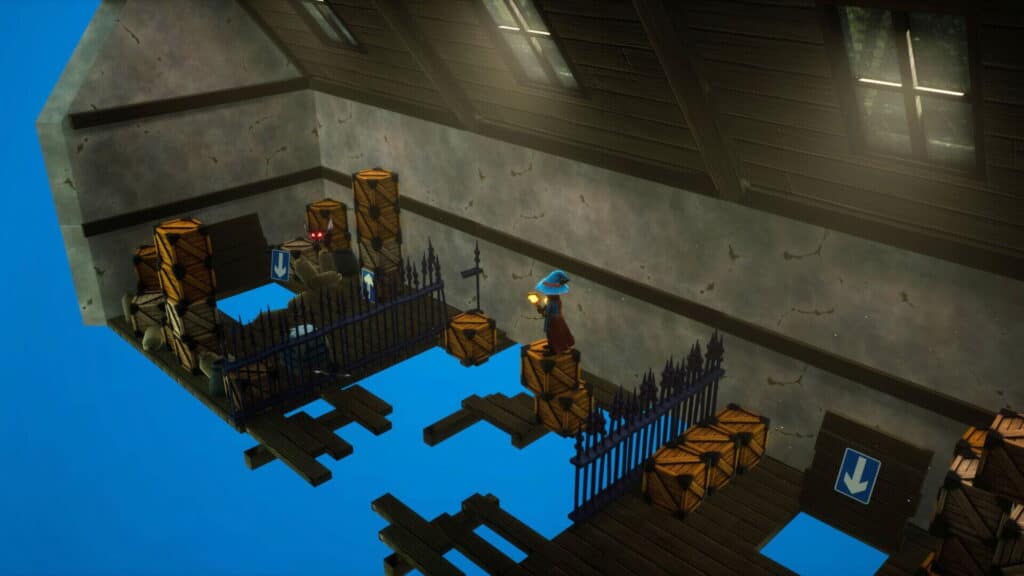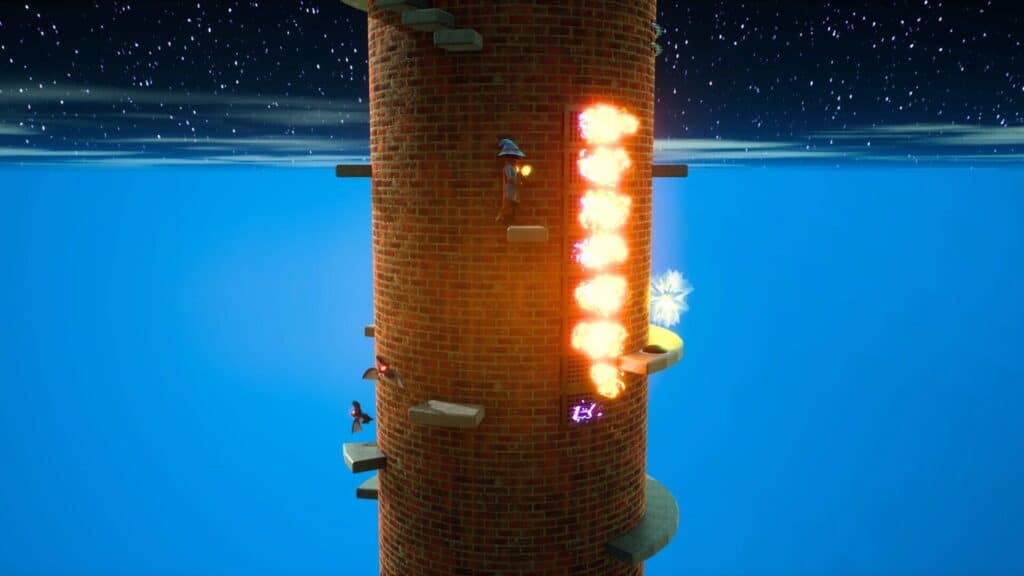It’s been over nine years since we last stepped into the unusual world of Lumo. An isometric platformer, the Lumo 2 release is a continuation of Triple Eh? Ltd’s love letter to retro gaming. Just like before, players will find themselves exploring interconnected rooms and unique landscapes. If you loved the first game, you’ll likely adore this new outing.
But if Lumo 2 is much the same, is it worth playing? That’s what this Lumo 2 review intends to help you decide. Before we dive in, this puzzle platformer isn’t for the faint hearted. Just like the classic 80s and 90s games of old, you’ll meet many challenges before you conquer every inch of Lumo 2’s quirky world.
The Escapist recaps
- Lumo 2 is the sequel to Lumo, both of which are isometric puzzle platformers that pay homage to the 8bit era of gaming.
- Filled with collectables, secret rooms, and intriguing puzzles, Lumo 2 is an experience that’ll keep you guessing.
- Promising over 100 different rooms to explore, Lumo 2 is vast, yet it isn’t without its share of flaws. Its sluggish controls and fixed angles make it frustratingly challenging at times.
- Lumo 2’s release date is set for 17 October, and will be available on Steam, Nintendo Switch, PS5, and Xbox Series X/S.
- Lumo 2 has been developed by Triple Eh? Ltd and published by Numskull Games.
A retro delight
In a plentiful sea of indie titles inspired by classic gaming, one could argue Lumo 2 offers nothing new. But they’d be wrong. While this experience has its flaws, it not only looks like a retro game but feels like one too.
The slightly clunky controls, the precise timing of certain mechanics, the somewhat annoying techno beats – it genuinely felt like this reviewer had been transported back in time. Even the graphics, although polished, appear dated. It’s difficult to put into words exactly what makes these visuals feel so authentically old-school, yet the end result is undeniably palpable.
There’s also much chaos to be found in this Lumo 2 game, not just in the gameplay but in the sheer variety of different aesthetics all mashed up together. One minute you’re crossing a desert landscape, the next you’re in a neon arcade game where you need to shoot camels. It’s weird, yet it works well; it feels like it shouldn’t, but somehow it does.
Puzzles, secrets, collectables – oh my!

Similar to Numskull Games’ other classic inspired title, Folly of the Wizards, Lumo 2 rewards those who search every inch of their surroundings. There are secret rooms and walkways to uncover, cassette tapes to hunt down, and rubber duckies to collect. But even if you take these elements away, Lumo 2 demands you explore – without doing so, you won’t progress very far.
After stepping through the three portals and successfully navigating the labyrinthian qualities of each of their rooms, I returned to find… nothing. What had gone wrong? It turns out, this reviewer hadn’t stepped inside every room, not by a long shot. There are over 100 areas to unlock, with many of them dictating you open their doors in a very specific way.
Despite having to cover old stomping grounds on occasion, Lumo 2 doesn’t feel repetitive or monotonous. It’s a credit to the developers that they’re able to negate such issues through the sheer volume of secrets they’ve packed in.
Sluggish controls and awkward angles

It isn’t all fun and games inside Lumo 2’s eccentric world, however. Sluggish controls, especially when you’re in your wizard form, hold the experience back. This reviewer noticed a slight lag whenever they needed to jump; no matter how quick off the mark a button press was, our little wizard friend failed to respond in time.
A similar sensation is felt when attempting to use the circle button to slam into the ground. If falling from a great height, your character can speed up their freefall. The problem is that the prompt to do so isn’t offered immediately, thus causing another delayed response. It may sound like nitpicking, but when you want to use this move to increase your bounce radius when using spring mechanisms, it throws your timing way off.
Ill timed jumps can also be blamed on the fixed camera angles of Lumo 2. Being unable to adjust the camera makes judging the distance between you and a nearby barrel much harder. And when you’re trying to cross a room where you can’t touch the purple water without dying, it becomes infuriating very quickly.
There is light at the end of the tunnel, though, because players can eventually find an item that’ll enable them to take control of the camera. Some may argue that this takes away from the isometric feature of Lumo 2, but this reviewer doesn’t agree. You don’t have to alter the camera angles if you don’t want to. What is more, the fixed camera angle will always reset when you re-enter a room.
Unfair limitations

Seeing how the Lumo 2 game is based on the 8bit era, it can be argued that it makes sense that its settings reflect that time period. That being said, this is a modern experience only inspired by the past and not rigidly confined by it. Consequently, the lack of accessibility options is problematic.
Lumo 2 hasn’t been created with every gamer in mind. Granted, few games ever are, due to their narrative, genre, themes, etc. But no game shouldn’t include accessibility features in 2025. Being able to remap the controls or disable motion blur are quality-of-life settings that would help make Lumo 2 more user friendly. There are a few settings you can tweak, such as the volume and gamma levels, but that’s about it. It’s extremely limited.
Ask The Escapist
Even though Lumo 2 is a sequel, you don’t need to play the first game before you begin.
Lumo 2’s difficulty varies; sometimes a puzzle has an easy solution, other times it doesn’t. Yes, gameplay can be challenging, but it isn’t unfairly difficult.
Lumo 2 will launch on 17 October.
Yes, Lumo 2 is available on the Nintendo Switch, as well as on Steam, PS5, and Xbox Series X/S.
The post Lumo 2 review: A quirky blast from the past appeared first on The Escapist.
